Michael J. Behe's Blog, page 476
May 28, 2019
Logic & First Principles, 21: Insightful intelligence vs. computationalism
One of the challenges of our day is the commonplace reduction of intelligent, insightful action to computation on a substrate. That’s not just Sci Fi, it is a challenge in the academy and on the street — especially as AI grabs more and more headlines.
A good stimulus for thought is John Searle as he further discusses his famous Chinese Room example:
The Failures of Computationalism
John R. Searle
Department of Philosophy
University of California
Berkeley CA
The Power in the Chinese Room.Harnad and I agree that the Chinese Room Argument deals a knockout blow to Strong AI, but beyond that point we do not agree on much at all. So let’s begin by pondering the implications of the Chinese Room.
The Chinese Room shows that a system, me for example, could pass the Turing Test for understanding Chinese, for example, and could implement any program you like and still not understand a word of Chinese. Now, why? What does the genuine Chinese speaker have that I in the Chinese Room do not have?
The answer is obvious. I, in the Chinese room, am manipulating a bunch of formal symbols; but the Chinese speaker has more than symbols, he knows what they mean. That is, in addition to the syntax of Chinese, the genuine Chinese speaker has a semantics in the form of meaning, understanding, and mental contents generally.
But, once again, why?
Why can’t I in the Chinese room also have a semantics? Because all I have is a program and a bunch of symbols, and programs are defined syntactically in terms of the manipulation of the symbols.
The Chinese room shows what we should have known all along: syntax by itself is not sufficient for semantics. (Does anyone actually deny this point, I mean straight out? Is anyone actually willing to say, straight out, that they think that syntax, in the sense of formal symbols, is really the same as semantic content, in the sense of meanings, thought contents, understanding, etc.?)
Why did the old time computationalists make such an obvious mistake? Part of the answer is that they were confusing epistemology with ontology, they were confusing “How do we know?” with “What it is that we know when we know?”
This mistake is enshrined in the Turing Test(TT). Indeed this mistake has dogged the history of cognitive science, but it is important to get clear that the essential foundational question for cognitive science is the ontological one: “In what does cognition consist?” and not the epistemological other minds problem: “How do you know of another system that it has cognition?”
What is the Chinese Room about? Searle, again:
Imagine that a person—me, for example—knows no Chinese and is locked in a room with boxes full of Chinese symbols and an instruction book written in English for manipulating the symbols. Unknown to me, the boxes are called “the database” and the instruction book is called “the program.” I am called “the computer.”
People outside the room pass in bunches of Chinese symbols that, unknown to me, are questions. I look up in the instruction book what I am supposed to do and I give back answers in Chinese symbols.
Suppose I get so good at shuffling the symbols and passing out the answers that my answers are indistinguishable from a native Chinese speaker’s. I give every indication of understanding the language despite the fact that I actually don’t understand a word of Chinese.
And if I do not, neither does any digital computer, because no computer, qua computer, has anything I do not have. It has stocks of symbols, rules for manipulating symbols, a system that allows it to rapidly transition from zeros to ones, and the ability to process inputs and outputs. That is it. There is nothing else. [Cf. Jay Richards here.]
What is “strong AI”? Techopedia:
Strong artificial intelligence (strong AI) is an artificial intelligence construct that has mental capabilities and functions that mimic the human brain. In the philosophy of strong AI, there is no essential difference between the piece of software, which is the AI, exactly emulating the actions of the human brain, and actions of a human being, including its power of understanding and even its consciousness.
Strong artificial intelligence is also known as full AI.
In short, Reppert has a serious point:
. . . let us suppose that brain state A [–> notice, state of a wetware, electrochemically operated computational substrate], which is token identical to the thought that all men are mortal, and brain state B, which is token identical to the thought that Socrates is a man, together cause the belief [–> concious, perceptual state or disposition] that Socrates is mortal. It isn’t enough for rational inference that these events be those beliefs, it is also necessary that the causal transaction be in virtue of the content of those thoughts . . . [But] if naturalism is true, then the propositional content is irrelevant to the causal transaction that produces the conclusion, and [so] we do not have a case of rational inference. In rational inference, as Lewis puts it, one thought causes another thought not by being, but by being seen to be, the ground for it. But causal transactions in the brain occur in virtue of the brain’s being in a particular type of state that is relevant to physical causal transactions.
This brings up the challenge that computation [on refined rocks] is not rational, insightful, self-aware, semantically based, understanding-driven contemplation:
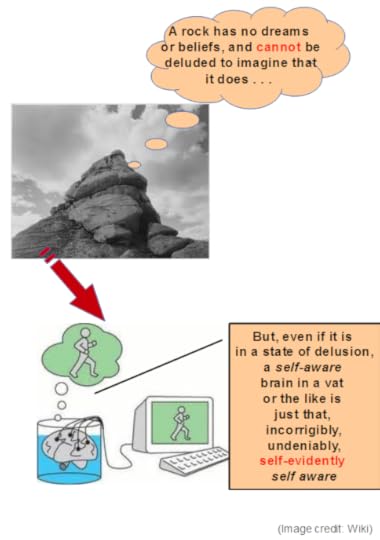
While this is directly about digital computers — oops, let’s see how they work —

. . . but it also extends to analogue computers (which use smoothly varying signals):
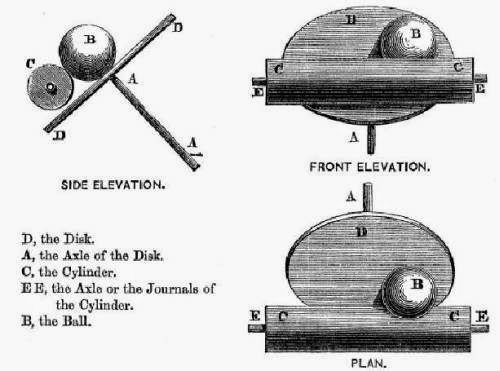
. . . or a neural network:
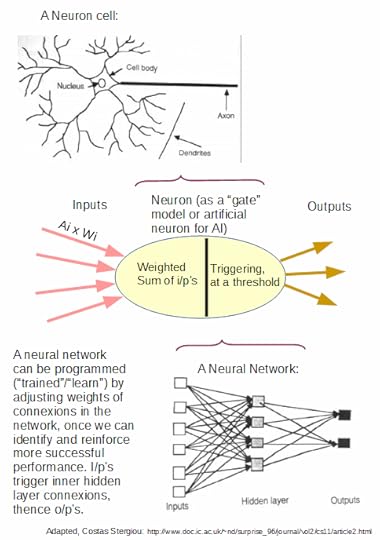 A neural network is essentially a weighted sum interconnected gate array, it is not an exception to the GIGO principle
A neural network is essentially a weighted sum interconnected gate array, it is not an exception to the GIGO principleA similar approach uses memristors, creating an analogue weighted sum vector-matrix operation:

As we can see, these entities are about manipulating signals through physical interactions, not essentially different from Leibniz’s grinding mill wheels in Monadology 17:
It must be confessed, however, that perception, and that which depends upon it, are inexplicable by mechanical causes, that is to say, by figures and motions. Supposing that there were a machine whose structure produced thought, sensation, and perception, we could conceive of it as increased in size with the same proportions until one was able to enter into its interior, as he would into a mill. Now, on going into it he would find only pieces working upon one another, but never would he find anything to explain perception [[i.e. abstract conception]. It is accordingly in the simple substance, and not in the compound nor in a machine that the perception is to be sought . . .
In short, computationalism falls short. As I summarised recently:
What we actually observe is:
A: [material computational substrates] –X –> [rational inference]
B: [material computational substrates] —-> [mechanically and/or stochastically governed computation]
C: [intelligent agents] —-> [rational, freely chosen, morally governed inference]
D: [embodied intelligent agents] —-> [rational, freely chosen, morally governed inference]
The set of observations A through D imply that intelligent agency transcends computation, as their characteristics and capabilities are not reducible to:
– components and their device physics,
– organisation as circuits and networks [e.g. gates, flip-flops, registers, operational amplifiers (especially integrators), ball-disk integrators, neuron-gates and networks, etc],
– organisation/ architecture forming computational circuits, systems and cybernetic entities,
– input signals,
– stored information,
– processing/algorithm execution,
– outputs
So too, we have to face the implication of the necessary freedom for rationality. That is, that our minds are governed by known, inescapable duties to truth, right reason, prudence (so, warrant), fairness, justice etc. Rationality is morally governed, it inherently exists on both sides of the IS-OUGHT gap.
That means — on pain of reducing rationality to nihilistic chaos and absurdity — that the gap must be bridged. Post Hume, it is known that that can only be done in the root of reality. Arguably, that points to an inherently good necessary being with capability to found a cosmos. If you doubt, provide a serious alternative under comparative difficulties: ____________
So, as we consider debates on intelligent design, we need to reflect on what intelligence is, especially in an era where computationalism is a dominant school of thought. Yes, we may come to various views, but the above are serious factors we need to take such into account. END
Copyright © 2019 Uncommon Descent . This Feed is for personal non-commercial use only. If you are not reading this material in your news aggregator, the site you are looking at is guilty of copyright infringement UNLESS EXPLICIT PERMISSION OTHERWISE HAS BEEN GIVEN. Please contact legal@uncommondescent.com so we can take legal action immediately.
Plugin by Taragana
The new “unique human genes” findings contradict previous research
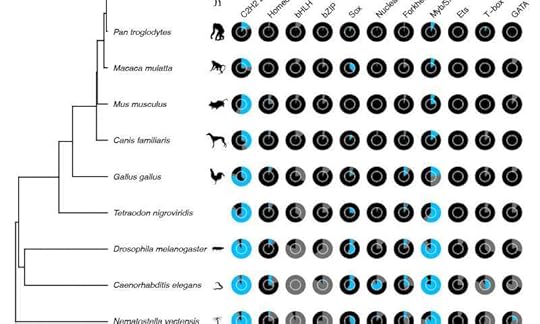
The blue section in the pie charts represents a proportion of transcription factors, across different classes, which are dissimilar in humans/Sam Lambert
The genes seem to have got started rather quickly:
The finding contradicts earlier research, which stated that almost all of human and fruit fly TFs bind the same motif sequences, and is a call for caution to scientists hoping to draw insights about human TFs by only studying their counterparts in simpler organisms.
“There is this idea that has persevered, which is that the TFs bind almost identical motifs between humans and fruit flies,” says Hughes, who is also a professor in U of T’s Department of Molecular Genetics and Fellow of the Canadian Institute for Advanced Research. “And while there are many examples where these proteins are functionally conserved, this is by no means to the extent that has been accepted.”
As for TFs that have unique human roles, these belong to the rapidly evolving class of so-called C2H2 zinc finger TFs, named for zinc ion-containing finger-like protrusions, with which they bind the DNA.
Their role remains an open question but it is known that organisms with more diverse TFs also have more cell types, which can come together in novel ways to build more complicated bodies.
Hughes is excited about a tantalizing possibility that some of these zinc finger TFs could be responsible for the unique features of human physiology and anatomy—our immune system and the brain, which are the most complex among animals. Another concerns sexual dimorphism: countless visible, and often less obvious, differences between sexes that guide mate selection—decisions that have an immediate impact on reproductive success, and can also have profound impact on physiology in the long term. The peacock’s tail or facial hair in men are classic examples of such features.
“Almost nobody in human genetics studies the molecular basis of sexual dimorphism, yet these are features that all human beings see in each other and that we are all fascinated with,” says Hughes. “I’m tempted to spend the last half of my career working on this, if I can figure out how to do it!” University of Toronto, “Scientists uncover a trove of genes that could hold key to how humans evolved” at Phys.org
Note: Hughes could run into problems with Correct culture, where sexual dimorphism in nature may now be a problematic concept. Stay tuned.
See also: Dozens of genes once thought widespread are unique to humans Researchers: Even between chimps and humans, whose genomes are 99 per cent identical, there are dozens of TFs which recognize diverse motifs between the two species in a way that would affect expression of hundreds of different genes.
Follow UD News at Twitter!
Copyright © 2019 Uncommon Descent . This Feed is for personal non-commercial use only. If you are not reading this material in your news aggregator, the site you are looking at is guilty of copyright infringement UNLESS EXPLICIT PERMISSION OTHERWISE HAS BEEN GIVEN. Please contact legal@uncommondescent.com so we can take legal action immediately.
Plugin by Taragana
May 27, 2019
Dozens of genes once thought widespread are unique to humans
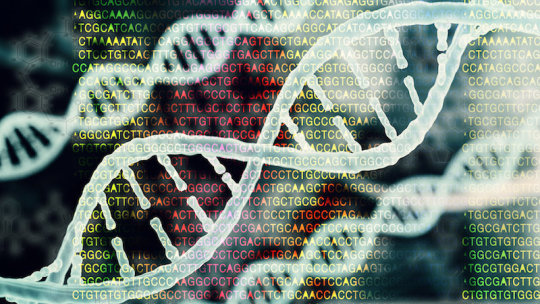
DNA sequence as art theme/© catalin / Adobe Stock
From ScienceDaily:
Researchers at the Donnelly Centre in Toronto have found that dozens of genes, previously thought to have similar roles across different organisms, are in fact unique to humans and could help explain how our species came to exist.
These genes code for a class of proteins known as transcription factors, or TFs, which control gene activity. TFs recognize specific snippets of the DNA code called motifs, and use them as landing sites to bind the DNA and turn genes on or off.
Previous research had suggested that TFs which look similar across different organisms also bind similar motifs, even in species as diverse as fruit flies and humans. But a new study from Professor Timothy Hughes’ lab, at the Donnelly Centre for Cellular and Biomolecular Research, shows that this is not always the case.
Writing in the journal Nature Genetics, the researchers describe a new computational method which allowed them to more accurately predict motif sequences each TF binds in many different species. The findings reveal that some sub-classes of TFs are much more functionally diverse than previously thought.
“Even between closely related species there’s a non-negligible portion of TFs that are likely to bind new sequences,” says Sam Lambert, former graduate student in Hughes’ lab who did most of the work on the paper and has since moved to the University of Cambridge for a postdoctoral stint.
“This means they are likely to have novel functions by regulating different genes, which may be important for species differences,” he says.
Even between chimps and humans, whose genomes are 99 per cent identical, there are dozens of TFs which recognize diverse motifs between the two species in a way that would affect expression of hundreds of different genes.
“We think these molecular differences could be driving some of the differences between chimps and humans,” says Lambert, who won the Jennifer Dorrington Graduate Research Award for outstanding doctoral research at U of T’s Faculty of Medicine. Paper. (access?) – Samuel A. Lambert, Ally W. H. Yang, Alexander Sasse, Gwendolyn Cowley, Mihai Albu, Mark X. Caddick, Quaid D. Morris, Matthew T. Weirauch, Timothy R. Hughes. Similarity regression predicts evolution of transcription factor sequence specificity. Nature Genetics, May 27, 2019; DOI: 10.1038/s41588-019-0411-1 More.
It’s amazing the difference one percent can make…
See also: A simple statistical test for the alleged “99% genetic identity” between humans and chimps
Copyright © 2019 Uncommon Descent . This Feed is for personal non-commercial use only. If you are not reading this material in your news aggregator, the site you are looking at is guilty of copyright infringement UNLESS EXPLICIT PERMISSION OTHERWISE HAS BEEN GIVEN. Please contact legal@uncommondescent.com so we can take legal action immediately.
Plugin by Taragana
How maize corn’s wild ancestor teosinte prevents maize from breeding with it
 Corn varieties/ © cpnjuansanchez, Adobe Stock
Corn varieties/ © cpnjuansanchez, Adobe Stock Apparently, teosinte rejects the newfangled human-bred stuff. From ScienceDaily:
It was known that a cluster of genes called Tcb1-s is one of three that confers incompatibility between these rarely hybridizing maize and teosinte populations. Unlike the other two, it is found almost exclusively in wild teosinte. It contains both male and female genes that encode wild teosinte’s ability to reject maize pollen.
In sexually compatible plants, the pollen, which is basically a sperm delivery vehicle, lands on the pistil and forms a tube that elongates and burrows down into the ovary, where the egg is fertilized. But that’s not what happens when maize pollen lands on the pistil, or silk, of a wild teosinte plant.
Evans and his colleagues — Carnegie’s Yongxian Lu (the first author), Samuel Hokin, and Thomas Hartwig, along with Jerry Kermicle of the University of Wisconsin Madison — demonstrated that the Tcb1-female gene encodes a protein that is capable of modifying cell walls, likely making maize pollen tubes less elastic and thus preventing them from reaching the teosinte eggs. When these tubes can’t stretch all the way to the eggs, fertilization can’t occur, and hybrids won’t be possible.
What’s more, because teosinte pollen can fertilize itself, the researchers think that the Tcb1-male genes encode an ability that allows teosinte pollen to overcome this pollen tube barrier building. Paper. open access – Yongxian Lu, Samuel A. Hokin, Jerry L. Kermicle, Thomas Hartwig, Mathew M. S. Evans. A pistil-expressed pectin methylesterase confers cross-incompatibility between strains of Zea mays. Nature Communications, 2019; 10 (1) DOI: 10.1038/s41467-019-10259-0 More.
The researchers don’t hazard a guess as to why the wild plant rejects its descendant. It’s tempting to liken it to a wolf pack chasing away a stray dog (if not outright killing him). Interesting development.
See also: Carefully Preserved Jumping Gene In Corn Shows How Intelligent Design Produces Massive Changes
Follow UD News at Twitter!
Copyright © 2019 Uncommon Descent . This Feed is for personal non-commercial use only. If you are not reading this material in your news aggregator, the site you are looking at is guilty of copyright infringement UNLESS EXPLICIT PERMISSION OTHERWISE HAS BEEN GIVEN. Please contact legal@uncommondescent.com so we can take legal action immediately.
Plugin by Taragana
At Forbes: Four reasons people “fear science”
It’s got to the point that, whenever we hear that people “fear science,” we expect self-righteous establishment platitudes and wagon-circling, oblivious to genuine reasons for doubt. This guy avoids those pitfalls. Summarizing a conference talk, he suggests, among other things,
Scientists need to be sure they have checked themselves, the data, and motivations before engaging with others.
Listen to those that challenge you and understand that their core values or stories may resonate more with them than a bunch of data and graphs.
Relevancy is key when talking beyond your science peer group. For example, climate change impacts on the price of cereal may resonate more than discussions about polar bears. Marshall Shepherd, “4 Reasons People Fear Science” at Forbes
It sounds so sensible, one wonders why he is allowed to express these views.
Of course, the price of cereal matters more to people on a limited budget than claims about polar bears, which they themselves never see outside a zoo. Most people in the world would not know that polar bears exist if no one told them so but they would know if food was getting scarce and cannot easily be fooled on the point. Good for him for understanding that.
See also: A study of the causes of science skepticism sails right by the most obvious cause of skepticism: Repeated untrustworthiness
Follow UD News at Twitter!
Copyright © 2019 Uncommon Descent . This Feed is for personal non-commercial use only. If you are not reading this material in your news aggregator, the site you are looking at is guilty of copyright infringement UNLESS EXPLICIT PERMISSION OTHERWISE HAS BEEN GIVEN. Please contact legal@uncommondescent.com so we can take legal action immediately.
Plugin by Taragana
Effacing the role of Darwinism in racism – Smithsonian edition
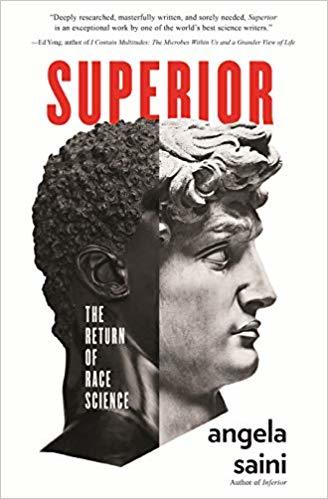
In an article about a new book, Superior: The Return of Race Science by Angela Saini, the Smithsonian magazine reviewer finds a way to efface the role of Darwinism in making racism scientifically respectable:
Scientific research has struggled with concepts of race for centuries, often proposing misleading or erroneous explanations of racial differences. Contentious debates among Europeans about the origins of modern humans began in the 19th century, and many of the continent’s leading scientists believed firmly that Europeans exemplified the most evolved and intelligent humans. Ramin Skibba, “The Disturbing Resilience of Scientific Racism” at Smithsonian Magazine
No mention is made of the fact that the general acceptance of Darwinism, in particular, enabled science-backed racism. Darwinian evolution theory made racism seem modern and cool instead backward and stupid.
A price is paid for refusal to grapple with reality; in this case, the price is a tendency to rely on bad arguments whose badness everyone agrees to overlook. For example:
While Mankind Quarterly has managed to hang on into the 21st century, “hard-core scientific racists are mostly old white men, and they’re not being reproduced in academia,” Panofsky says. Even so, plenty of racist, young white men continue to promote concepts of scientific racism, such as the participants in the 2017 Unite the Right rally in Charlottesville, Virginia—an event that even the scientific journal Nature felt the need to condemn. Ramin Skibba, “The Disturbing Resilience of Scientific Racism” at Smithsonian Magazine
The old white men are probably Darwinists and the Charlottesville rally, which ended in a murder, can’t have featured many scientists. So the connection between the two groups of “white men” would most likely be Darwin in the school system. But wait, Darwin in the school system is Correct, right? Just don’t think too hard and you’ll be fine.
Skibba is telling the only story he is allowed to tell and that’s too bad if we think that some honesty would help. In any Darwinian scheme, someone must be the subhuman. Otherwise, there is no beginning to human history.
Follow UD News at Twitter!
See also: See also: David Klinghoffer: Racism is integral to Darwinian thinking, “like an irremediable birth defect” Under the circumstances, it is a testament to human decency that more Darwinians aren’t racists.
“Race realism” (Darwinian racism) pops up again: the John Derbyshire commemorative edition. An American conservative thinkmag published geneticist Razib Khan, glorifying Darwinism, and he turned out to have apparent racist links. Then someone with even more pronounced racist links rose to defend him.
Darwinian conservative has a troubling history re racist links Every so often, for whatever reason, a US conservative thinkmag steps on Darwin’s rake.
In any Darwinian scheme, someone must be the subhuman. Otherwise, there is no beginning to human history.
and
Was Neanderthal man fully human? The role racism played in assessing the evidence
Follow UD News at Twitter!
Copyright © 2019 Uncommon Descent . This Feed is for personal non-commercial use only. If you are not reading this material in your news aggregator, the site you are looking at is guilty of copyright infringement UNLESS EXPLICIT PERMISSION OTHERWISE HAS BEEN GIVEN. Please contact legal@uncommondescent.com so we can take legal action immediately.
Plugin by Taragana
May 26, 2019
Spiders and birds of Paradise use the same molecular strategy for mating displays
They’re closely related, right?
According to the team’s observations, spider super black reflects less than 0.5 percent of incoming light, creating a gleam-free, featureless void in color…
Recently, McCoy and her colleagues studied a similar type of super black coloration in male birds of paradise. They found that their blackness is produced by microscopic structures that imprison the majority of incoming light, creating a featureless, dark surface. … “Peacock spiders and birds of paradise are two of the most elaborate types of animals on Earth,” McCoy says.
“I sometimes call them ‘spiders of paradise’—but of course, that’s the bird-centric view of the world.” Nadia Drake, “How peacock spiders use optical illusions to woo females” at National Geographic
Hat tip: Philip Cunningham
Follow UD News at Twitter!
See also: Sit down. Cells have signalling circuit boards. Only much more advanced than ours
and
Evolution appears to converge on goals—but in Darwinian terms, is that possible? Cellular quantum computing…? When Darwinism was alive and the Darwin-in-the-schools lobby was suing the school boards, the cell was a simple jelly that could arise in a warm little pond. Remember that?
and
Copyright © 2019 Uncommon Descent . This Feed is for personal non-commercial use only. If you are not reading this material in your news aggregator, the site you are looking at is guilty of copyright infringement UNLESS EXPLICIT PERMISSION OTHERWISE HAS BEEN GIVEN. Please contact legal@uncommondescent.com so we can take legal action immediately.
Plugin by Taragana
A serious look at whether we can be good without God
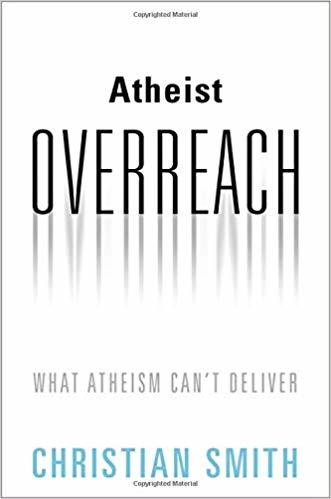
Here’s an odd program for Canada’s government broadcaster, the CBC, to sponsor:
Christian Smith is a Professor of Sociology at the University of Notre Dame, and is the author of Atheist Overreach: What Atheism Can’t Deliver. In the book, Smith addresses three main claims made by atheists: that science can determine whether God exists; that human beings are not naturally religious; and — the focus of this IDEAS episode —that human beings can be good without God. Not just good as individuals, but capable of a collective morality that can redress inequality and suffering, and lead to the betterment of all humanity.
Is morality ‘natural’?
One of the key problems with atheist arguments for universal benevolence, according to Smith, is the contention that we live in a “naturalistic” universe, in a realm that simply came to be, with no creator. So how can naturalistic atheist thinkers claim any rational basis for the high moral standard they’re reaching for?
How do you get from a naturalistic universe to the commitment that every human being on earth possesses an innate dignity — no matter how terrible, empirically, of a person they are, by the way — that human beings whom you will never meet, on the other side of the world… should matter to you … and that everyone has human rights to X, Y, and Z that we can spell out. Where does that come from? What is the basis of those moral commitments? They’re not easy to make happen. They’re not necessarily ‘natural’ to human beings. Paul Kennedy, interviewing Notre Dame philosopher Christian Smith, “How good can we really be without God?” at CBC Ideas
Should be interesting. What’s “natural” is what people happen to want. Absent any higher consideration, virtue vs. vice may come to mean success vs. failure in getting what one wants.
See also: Berlinski: There is no argument against religion that is not also an argument against mathematics
Follow UD News at Twitter!
Copyright © 2019 Uncommon Descent . This Feed is for personal non-commercial use only. If you are not reading this material in your news aggregator, the site you are looking at is guilty of copyright infringement UNLESS EXPLICIT PERMISSION OTHERWISE HAS BEEN GIVEN. Please contact legal@uncommondescent.com so we can take legal action immediately.
Plugin by Taragana
Christian PhD driven out by the raging Woke
When this happens in the sciences, it’s the same thing only more is at stake:
I entered the PhD philosophy program at Purdue University in 2004. Six weeks in I was shocked that I was receiving prank calls at 3 in the morning from fellow grad students. They were mocking me for my faith. The next semester I recall receiving a permanent note in my file from a Marxist professor who claimed I was schizophrenic. While he was not a clinical psychologist capable of judging me schizophrenic, he believed religion was the opiate of the masses and that my beliefs were delusional.
I tried to be as stealth as possible and keep my head down to graduate. Nonetheless I could not avoid the hostility. While in my fifth year I was sabotaged near the finish line. The atheist director of grad studies found a way to work in tandem with her longtime friend, my adviser, to root me out. I was ABD (“all but dissertation”) with a 3.5 GPA. I completed all course work, languages, exams, and my funding was even from a different department. But my dissertation committee chair informed me that he dropped me. He said it was because I had “too much of a faith perspective.” Never mind the fact that part of my dissertation topic was on the virtue of faith.
I now had no adviser and no legal recourse. If they don’t want to advise a grad student, then they don’t have to. I couldn’t find an adviser willing to touch me. Corey Miller, “I was forced out of my PhD program because of my open faith in Jesus Christ. Here’s my story.” at The College Fix
The question of whether the raging Woke have the right to do this stuff needs to be considered alongside whether anyone should be expected to fund their behavior through taxes or ponder their (increasingly mostly garbage) output—as conveyed to us through government and media.
Another thing: It matters more in the sciences because so much science isn’t just rubbish anyway. The Woke right to rule with no qualifications whatever apart from the implied threat of violence will most likely mean the suppression of good evidence and the promotion of Woke rubbish.
Miller, as he goes on to explain, later became president of a Christian thinktank dedicated to punching back twice as hard, which may be wise under the circumstances. Read the story.
See also: Darwinian PZ Myers Blows Off Attack On Bret Weinstein
Follow UD News at Twitter!
Copyright © 2019 Uncommon Descent . This Feed is for personal non-commercial use only. If you are not reading this material in your news aggregator, the site you are looking at is guilty of copyright infringement UNLESS EXPLICIT PERMISSION OTHERWISE HAS BEEN GIVEN. Please contact legal@uncommondescent.com so we can take legal action immediately.
Plugin by Taragana
Michael Egnor: It’s a matter of fact, not belief, that only humans reason
 Michael Egnor
Michael Egnor Readers may remember philosopher Justin Smith, who thinks that we can understand life better if we “give up the idea of rationality as nature’s last remaining exception.”
Neurosurgeon Michael Egnor weighs in, responding point by point to the essay, for example:
Material states of the brain can, of course, influence our power of reason—an ounce of whiskey can have quite an effect on our judgment—but the power of reason itself is immaterial. It cannot “evolve” because natural selection, whatever its worth as a scientific hypothesis, needs matter to act on.
[Smith:] “Reason is exceedingly rare, a hapax legomenon of nature, and yet this rarity has led to a bind: when pushed to account for its origins, thinkers who champion reason’s human-exclusivity are forced to lean on supernaturalism, while those who contend that reason is a fundamentally natural property have then to concede that ‘lower’ lifeforms are capable of exercising it. The question is – how?”
Reason isn’t rare at all. 7.7 billion people do it every day. But no non-human animal does it. This immaterial power of the soul is precisely what makes man qualitatively different from every other living thing. And I am not “forced to lean on supernaturalism” by pointing this out. I’m merely making an observation that’s obvious to all. Man, and man alone, has the power to reason. Michael Egnor, “An atheist argues against reason” at Mind Matters News
Egnor’s words remind us that pop science media made strenuous efforts recently to convince the world that paper wasps reason:
The researchers clearly dissociate themselves from a claim that wasps reason. “We’re not saying that wasps used logical deduction to solve this problem…” But the media ignored the hint, as they might be expected to do. …
Elite media behave the same way as tabloids: Whereas the media release says, “The study by Tibbetts and her colleagues illustrates that paper wasps can build and manipulate an implicit hierarchy. But it makes no claims about the precise mechanisms that underlie this ability,” the Smithsonian Magazine headline is Wasps Are the First Invertebrates to Pass This Basic Logic Test (May 10, 2019). Denyse O’Leary, “Wasps can reason? Science media say yes, researchers no” at Mind Matters News
Legacy media are collapsing because their passion is enforcing a “narrative,” not in informing an audience about what is really happening.
If science writers need to believe that wasps reason (or that people don’t), that’s what you will be hearing from them.
Meanwhile, the facts are becoming more and more obvious. Stay tuned.
See also: Philosopher eliminates human exceptionality by dethroning reason
Also by Michael Egnor: Why apes are not spiritual beings Apes do not have language, which enables humans to think about abstract ideas
Can physics prove there is no free will? No, but it can make physicists incoherent when they write about free will
and
The brain is not a meat computer Dramatic recoveries from brain injury highlight the difference
Follow UD News at Twitter!
Copyright © 2019 Uncommon Descent . This Feed is for personal non-commercial use only. If you are not reading this material in your news aggregator, the site you are looking at is guilty of copyright infringement UNLESS EXPLICIT PERMISSION OTHERWISE HAS BEEN GIVEN. Please contact legal@uncommondescent.com so we can take legal action immediately.
Plugin by Taragana
Michael J. Behe's Blog
- Michael J. Behe's profile
- 219 followers



